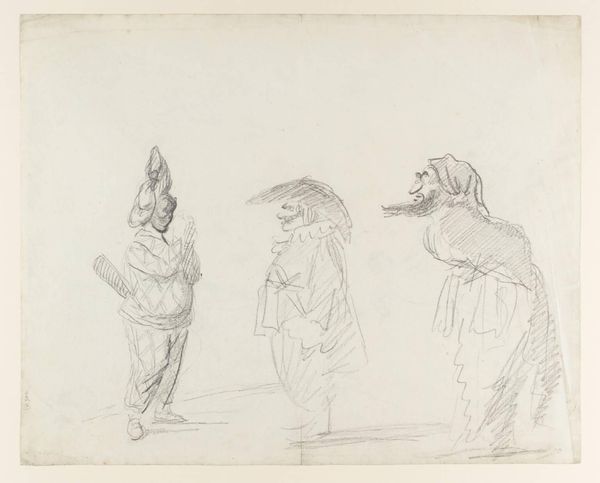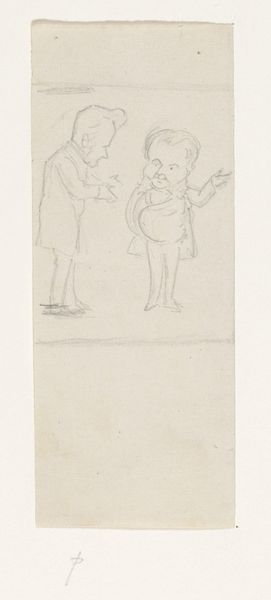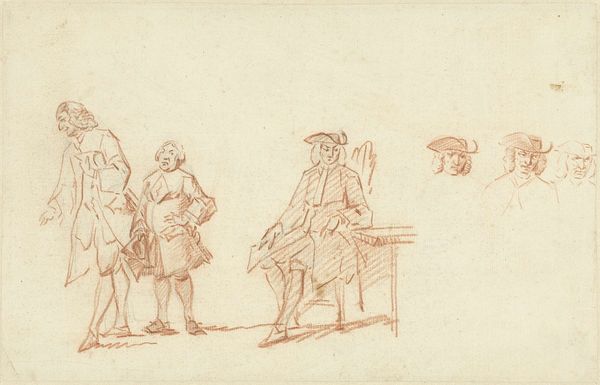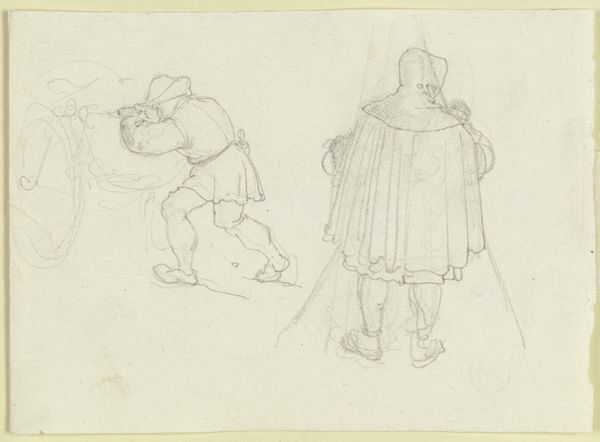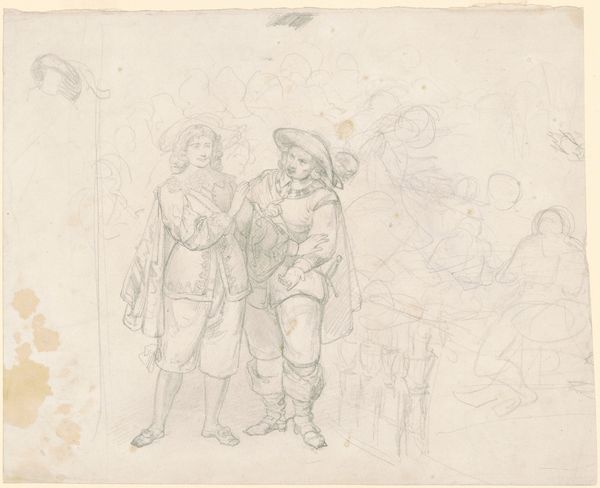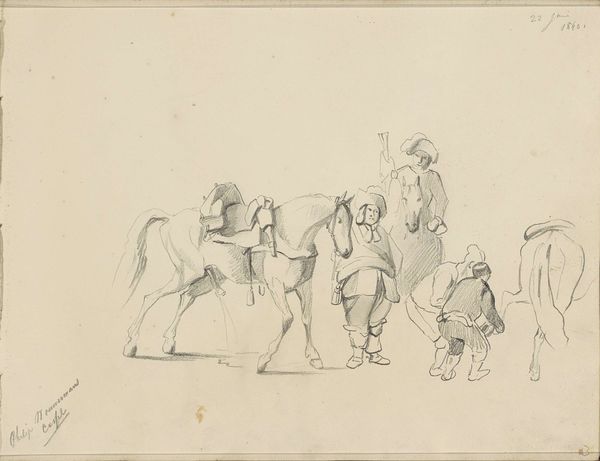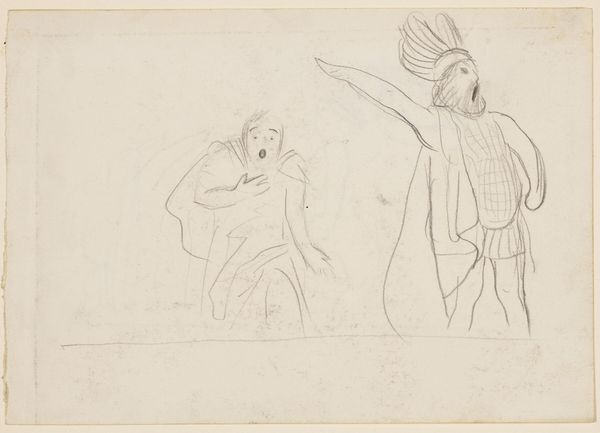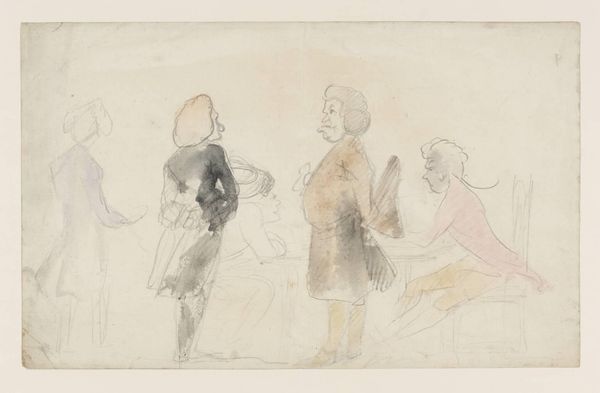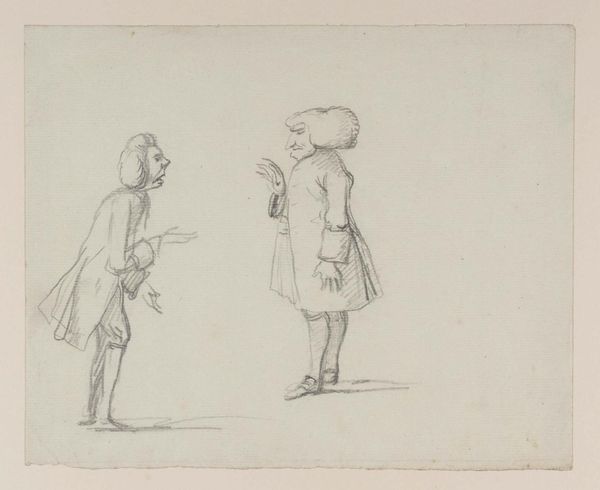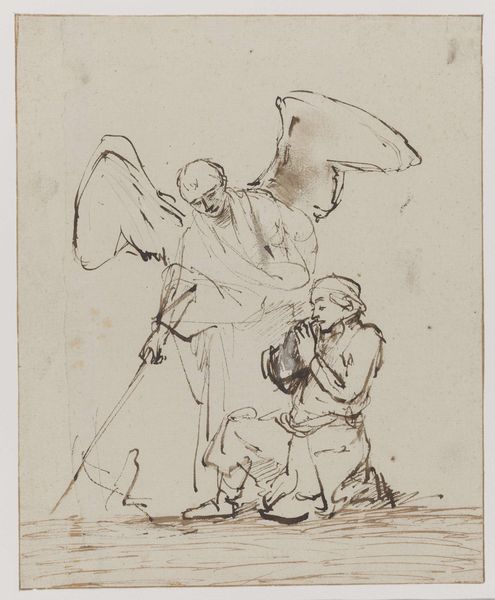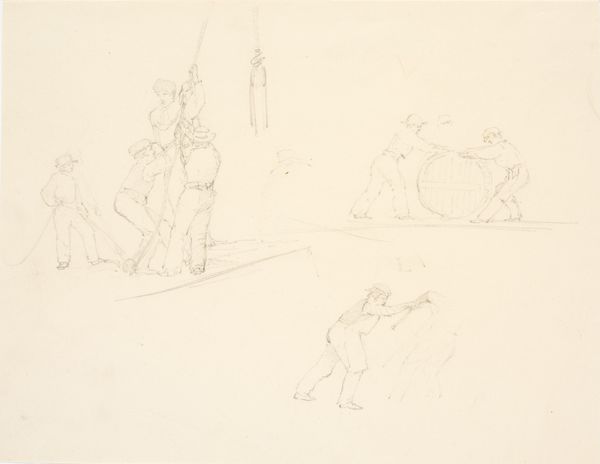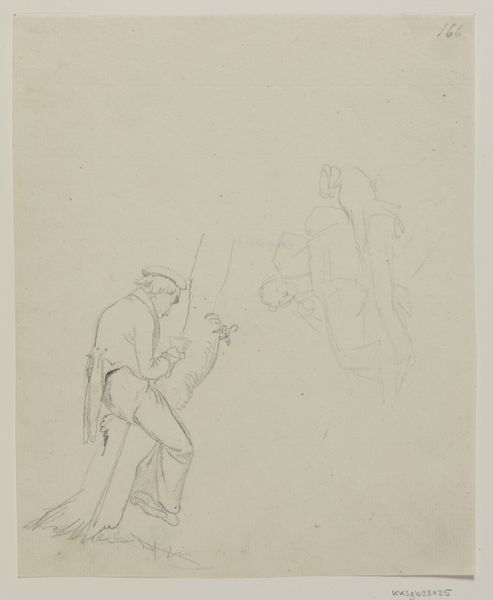
Dimensions: support: 190 x 237 mm
Copyright: CC-BY-NC-ND 4.0 DEED, Photo: Tate
Editor: This is Henry William Bunbury's sketch, "Three Anglers." There's a casualness to the composition that I find intriguing. How would you interpret this work in the context of its time? Curator: Consider the rise of leisure culture in late 18th-century England. Bunbury's sketch, with its light touch, reflects a growing middle class with time for pursuits like angling. It's a playful image, but also a document of changing social norms and the democratization of leisure. Editor: So, it’s less about the fishing itself and more about who is now doing the fishing? Curator: Precisely. Think about the public role of art then: often to depict and, in some ways, legitimize these shifts in social status and leisure activities. The sketch is not just a depiction, it's a social commentary. Editor: That's a fascinating perspective, seeing it as a commentary on social change rather than just a scene of leisure. Curator: Indeed. The image and its reception reflect the evolving politics of representation in British society.
